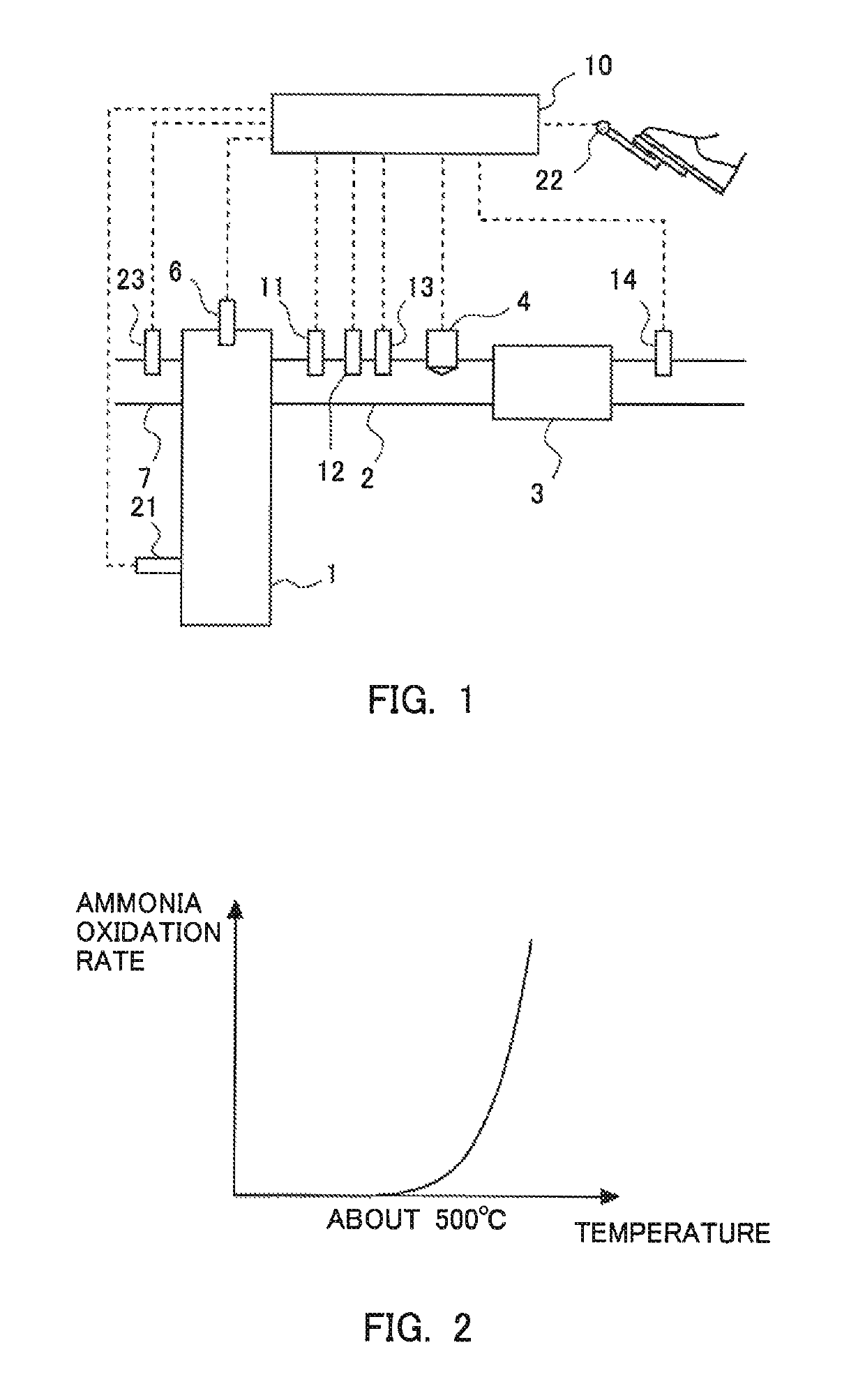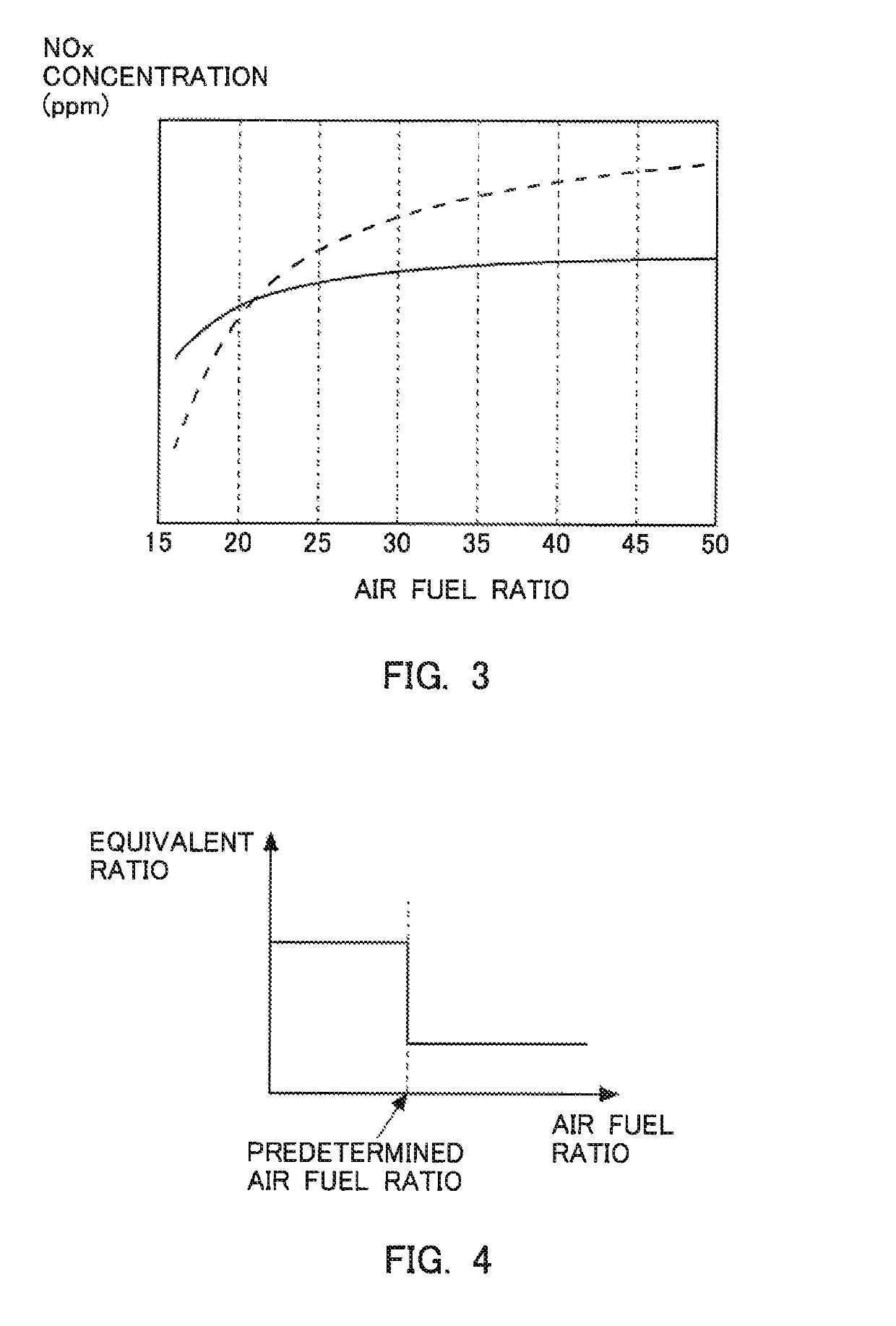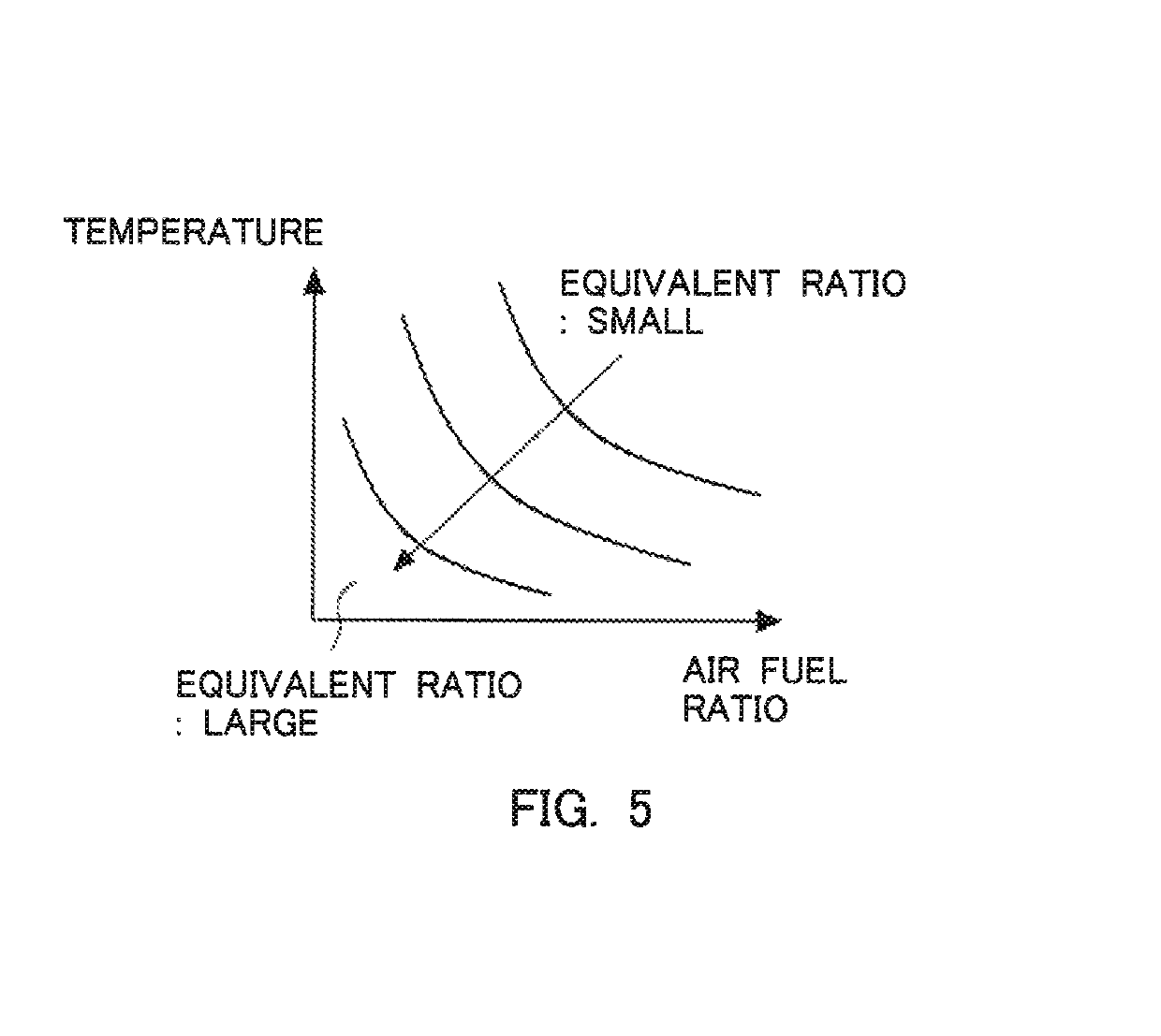Exhaust gas purification apparatus for an internal combustion engine
a technology for exhaust gas purification and internal combustion engines, which is applied in the direction of exhaust treatment electric control, machines/engines, separation processes, etc., can solve the problems of difficult removal or reduction of nox
- Summary
- Abstract
- Description
- Claims
- Application Information
AI Technical Summary
Benefits of technology
Problems solved by technology
Method used
Image
Examples
first embodiment
[0042]FIG. 1 is a view showing the schematic construction of an internal combustion engine and its exhaust system according to a first embodiment of the present disclosure. The internal combustion engine 1 is a diesel engine for driving a vehicle. However, the internal combustion engine 1 may be a gasoline engine. An exhaust passage 2 is connected to the internal combustion engine 1. In the exhaust passage 2, there is arranged an NOx selective catalytic reduction catalyst 3 (hereinafter, referred to as an “NOx catalyst 3”) which serves to selectively reduce NOx in an exhaust gas with the use of ammonia as a reducing agent.
[0043]In the exhaust passage 2 at the upstream side of the NOx catalyst 3, there is arranged an addition valve 4 which serves to add urea water as a precursor of ammonia into an exhaust gas. The urea water added from the addition valve 4 is hydrolyzed into ammonia in the NOx catalyst 3, and the ammonia thus generated is adsorbed to the NOx catalyst 3. This ammonia ...
second embodiment
[0067]In the above-mentioned first embodiment, the air fuel ratio of the exhaust gas becomes equal to or less than the predetermined air fuel ratio, only at the time of high load operation such as acceleration, etc. For that reason, when light load operation continues, the equivalent ratio can not be made large, so the NOx reduction rate may drop. Accordingly, in a second embodiment of the present disclosure, in cases where the amount of adsorption of ammonia in an NOx catalyst 3 is smaller than a predetermined amount of adsorption, the air fuel ratio of the exhaust gas flowing into the NOx catalyst 3 is actively made smaller than the predetermined air fuel ratio. The predetermined amount of adsorption is an amount of adsorption of ammonia in the NOx catalyst 3 in which the NOx reduction rate falls within an allowable range. The predetermined amount of adsorption has been obtained in advance through experiments, simulations or the like. In this manner, by actively making the air fue...
third embodiment
[0080]FIG. 9 is a view showing the schematic construction of an internal combustion engine and its exhaust system according to a third embodiment of the present disclosure. In the following, a construction different from that shown in FIG. 1 will mainly be explained. An internal combustion engine 1 according to this third embodiment is mounted on a hybrid vehicle 10. In addition, a generator 101 is mounted on the hybrid vehicle 100. With the hybrid vehicle 100, electricity or electric power can be generated by means of the generator 101 using the internal combustion engine 1 as a power source. A battery 102 is connected to the generator 101 through electrical wiring. Also, an ECU is connected to the generator 101 through electrical wiring, so that the generator 101 is controlled by means of the ECU 10.
[0081]In this third embodiment, as a technique to increase the air fuel ratio of exhaust gas, there is adopted a technique to increase the torque produced by the internal combustion en...
PUM
 Login to View More
Login to View More Abstract
Description
Claims
Application Information
 Login to View More
Login to View More - R&D
- Intellectual Property
- Life Sciences
- Materials
- Tech Scout
- Unparalleled Data Quality
- Higher Quality Content
- 60% Fewer Hallucinations
Browse by: Latest US Patents, China's latest patents, Technical Efficacy Thesaurus, Application Domain, Technology Topic, Popular Technical Reports.
© 2025 PatSnap. All rights reserved.Legal|Privacy policy|Modern Slavery Act Transparency Statement|Sitemap|About US| Contact US: help@patsnap.com



